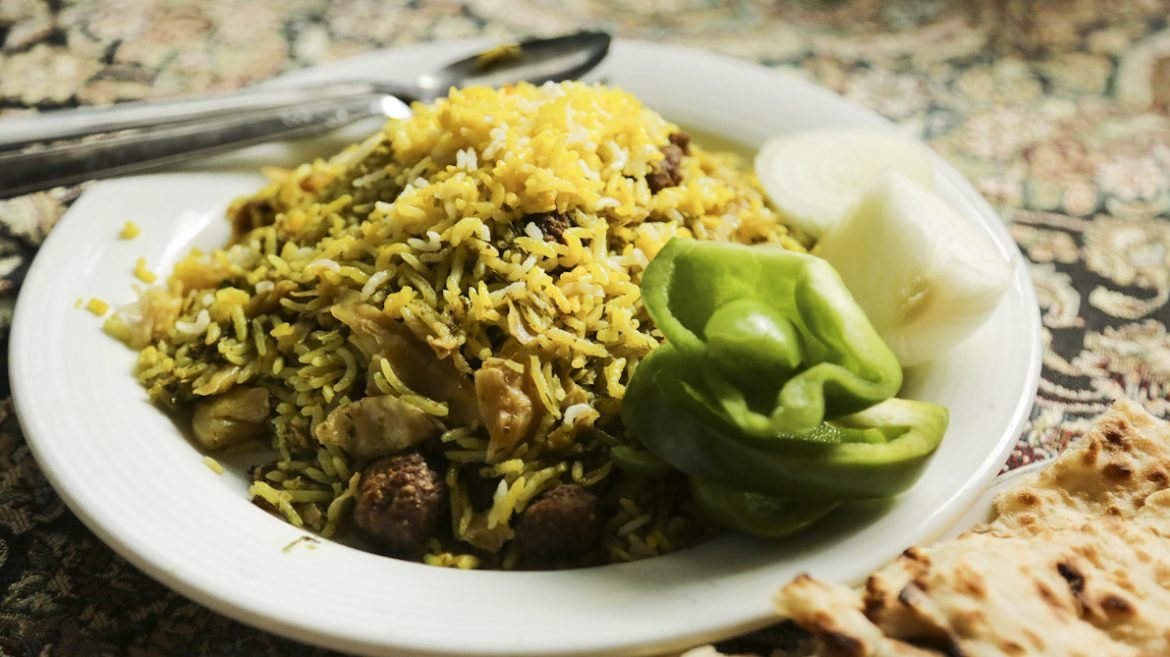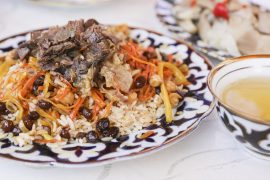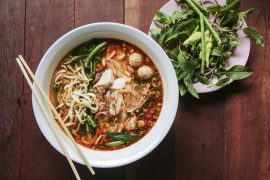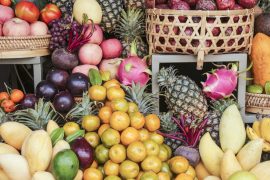The truly tasty Iranian food is that cooked in Iranian homes. If you are lucky enough to be invited to a family meal for some Iranian traditional cuisine, and Iranians are keen on having foreigners at their table, you are sure to experience a marvellous human and culinary moment.
1. The Sofreh
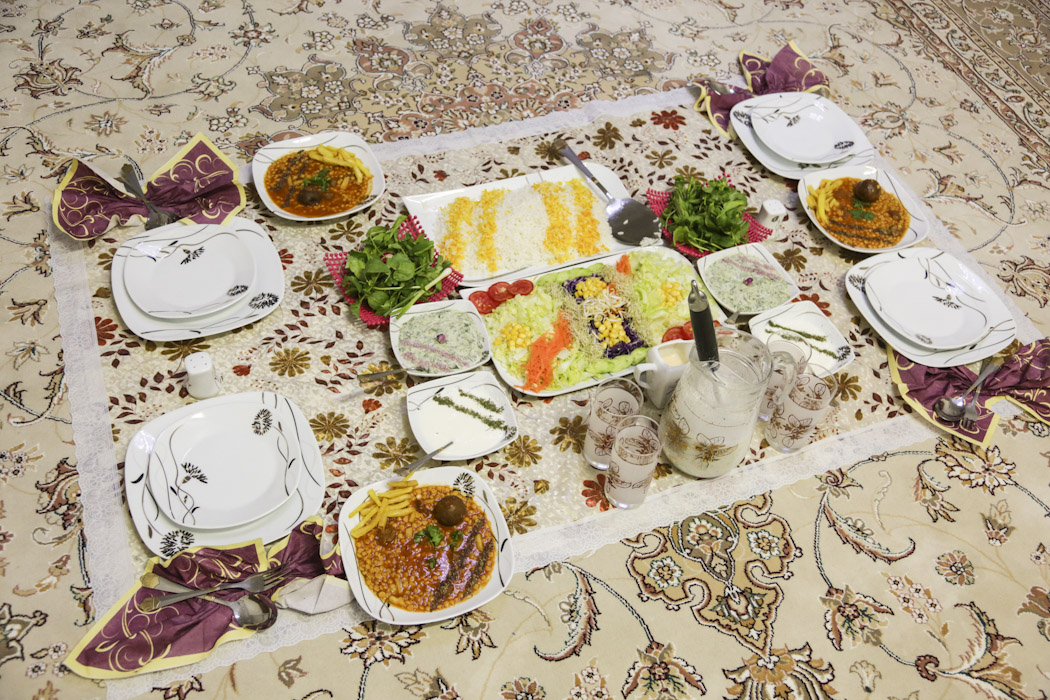
The sofreh is a piece of cloth that serves as protection for the carpet from stains but also represents the start of a ritual that includes family, friends and guests being together to enjoy a memorable meal. The floor is the family’s preferred place to eat.
2. Exquisite Fragrances and Ingredients
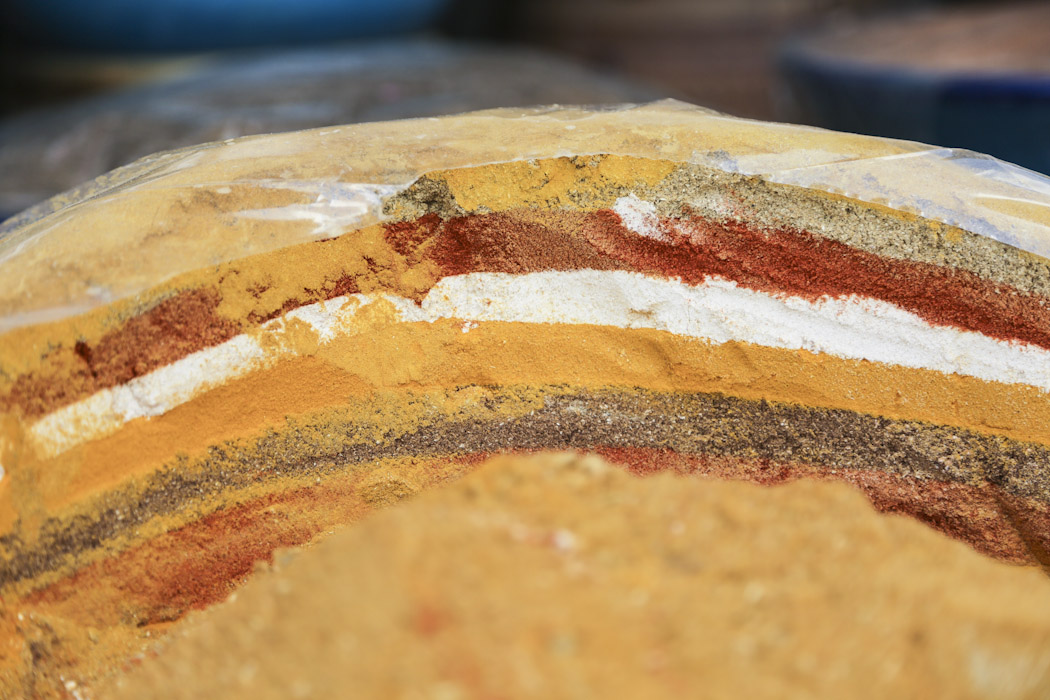
Persian cuisine focuses on a variety of fragrances. The exquisite flavours of saffron and rosewater, the tart taste of pomegranates and dried barberries, the vinegary feel of pickled cucumbers and the fresh savours of herbs and onions. If you have a good nose, you may also feel the subtle aromas of cardamom, turmeric and cumin.
3. Polo (tahdig)
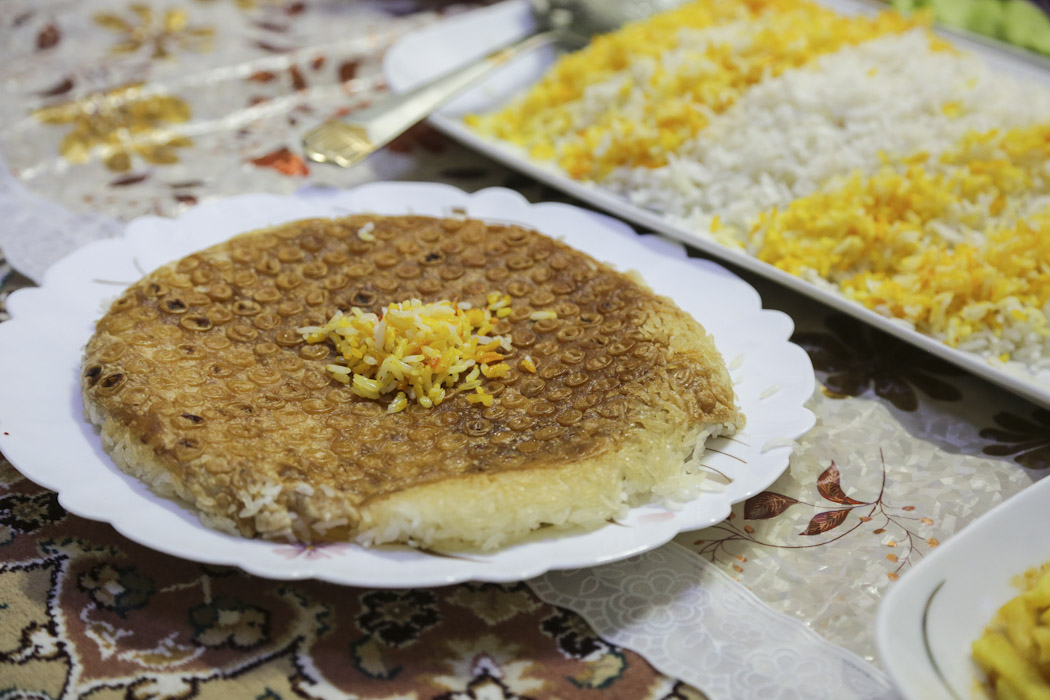
Different trays of polo (rice), cooked in various ways, are brought to the table. Some are decorated with barberries and saffron. A favourite is the tahdig, in which the rice is deliberately burnt at the bottom of the pot so that it caramelises together with, you guessed it, saffron. This burnt rice gets crispy and is delicious.
4. Borani and Doogh
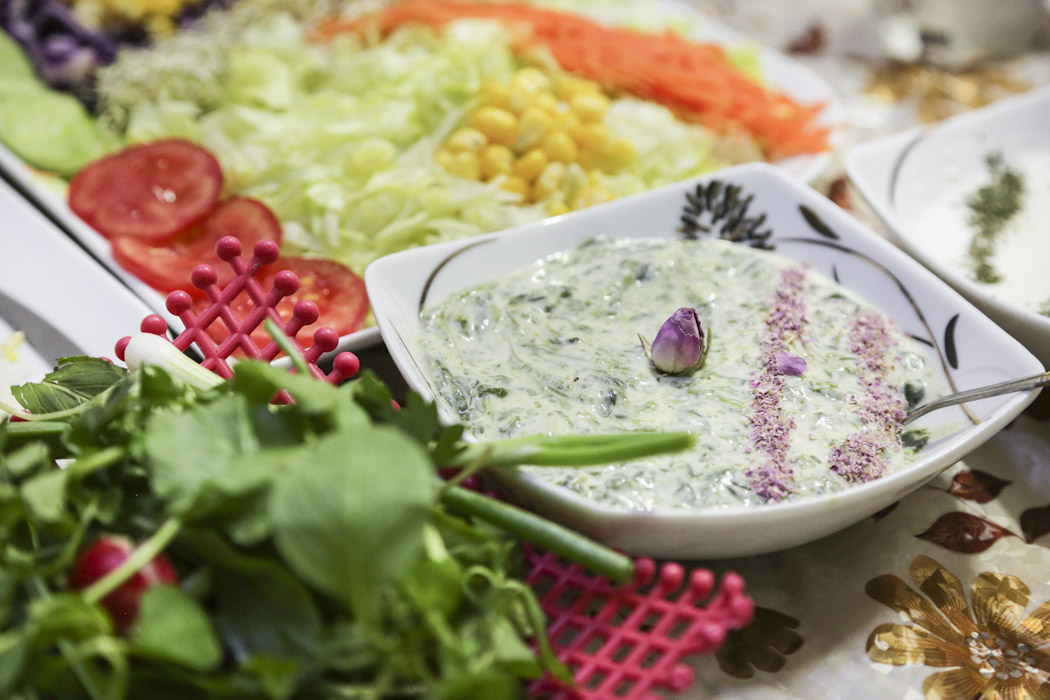
Another usual dish on the table is sour yogurt, which can be mixed with mint, garlic and cucumber (called mast-o-khiar) or borani when prepared with chopped spinach. When mixed with water it gives birth to Iranians’ favourite drink, doogh, to which people usually add mint and diced cucumber.
5. Ash-e-doogh (soup)
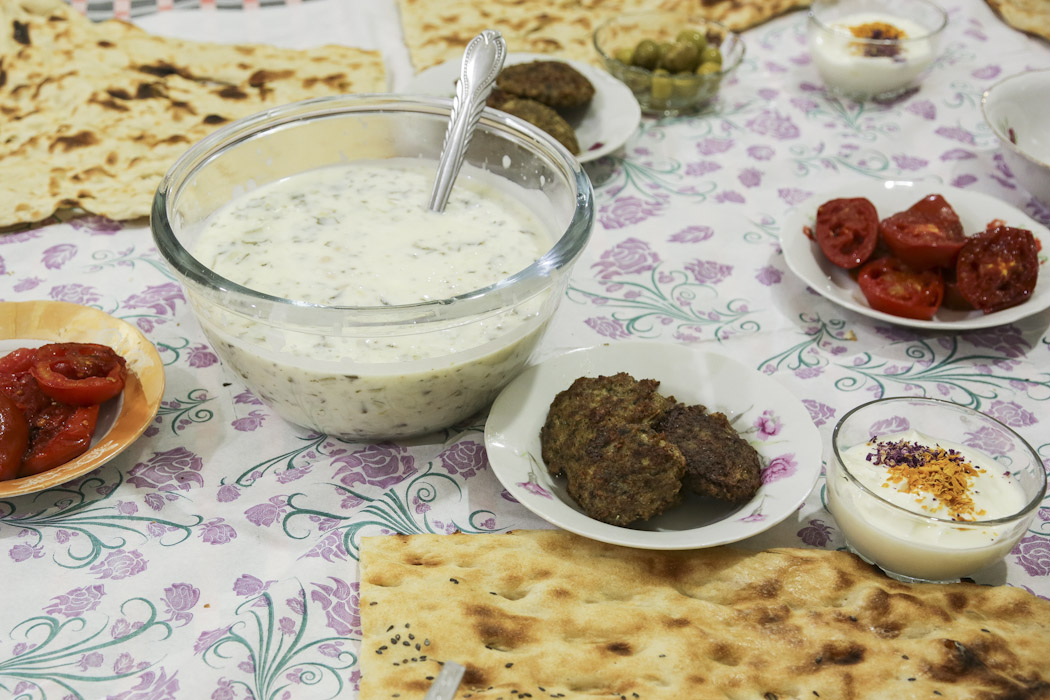
In the Western parts of Iran, soup is also prepared with yogurt and rice. It is the traditional ash-e-doogh which Iranians eat at any time of the day.
6. Ash
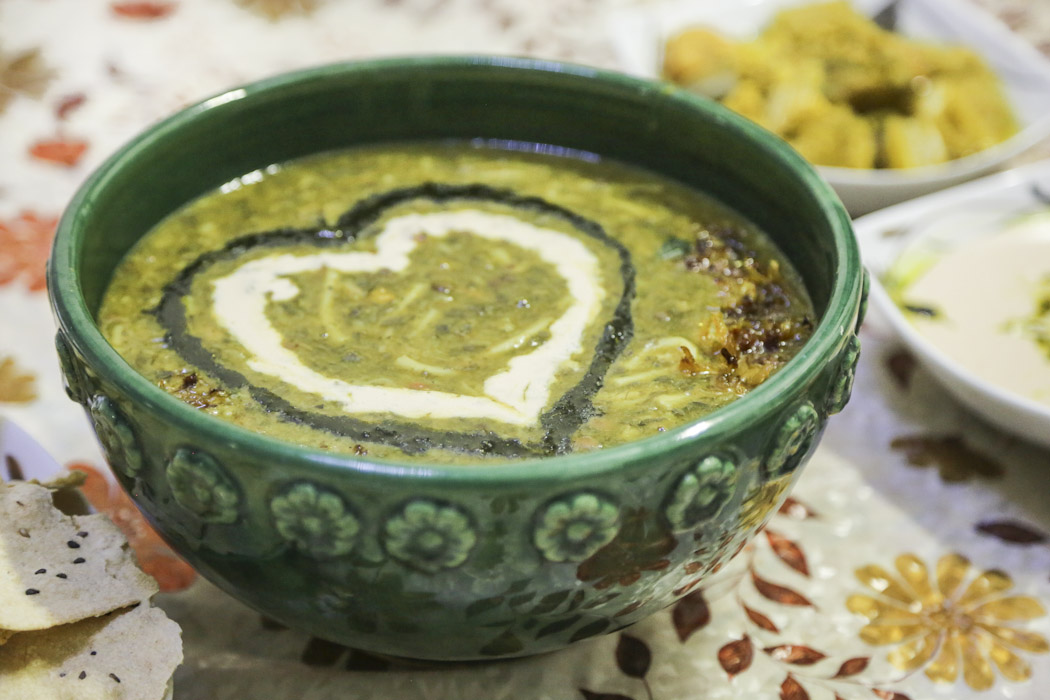
The most common soup, however, is ash, a hearty thick vegetable soup (very often the main ingredient is spinach) sometimes with noodles. It is usually decorated with sour cream.
7. Iranian Kebab
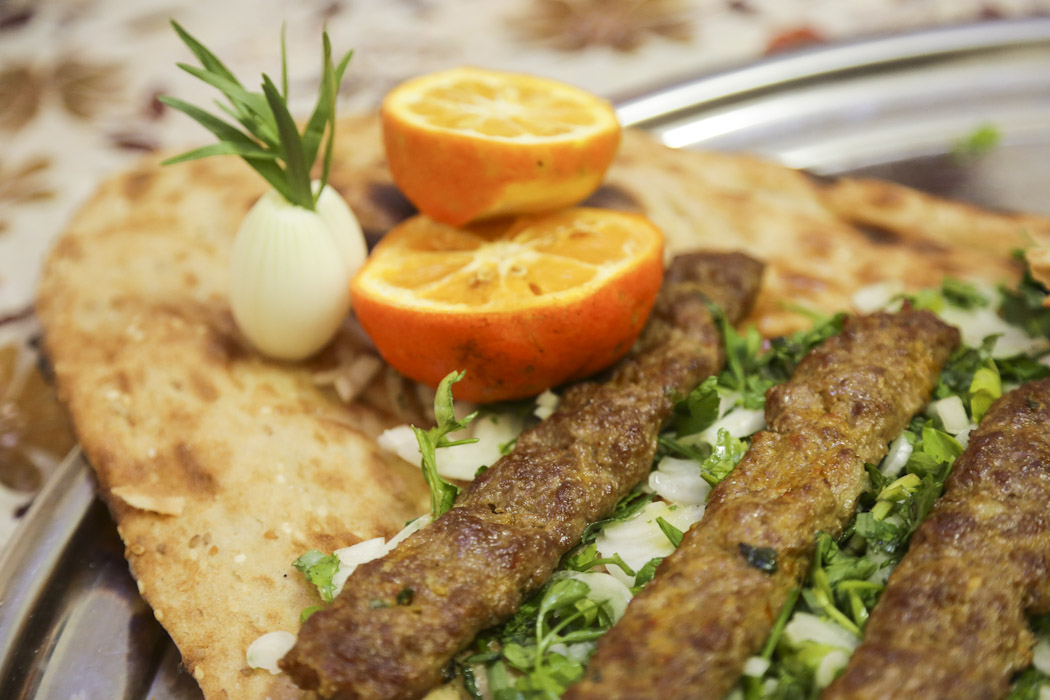
Kebab is the perennial favourite – barbecue – on a long skewer. At home or at picnics, chicken (joojeh) and lamb (koobideh) meat is grilled over the fire with tomatoes. Once cooked, the meat rests inside folded flatbread so that it absorbs the meat’s juices.
8. Dizi
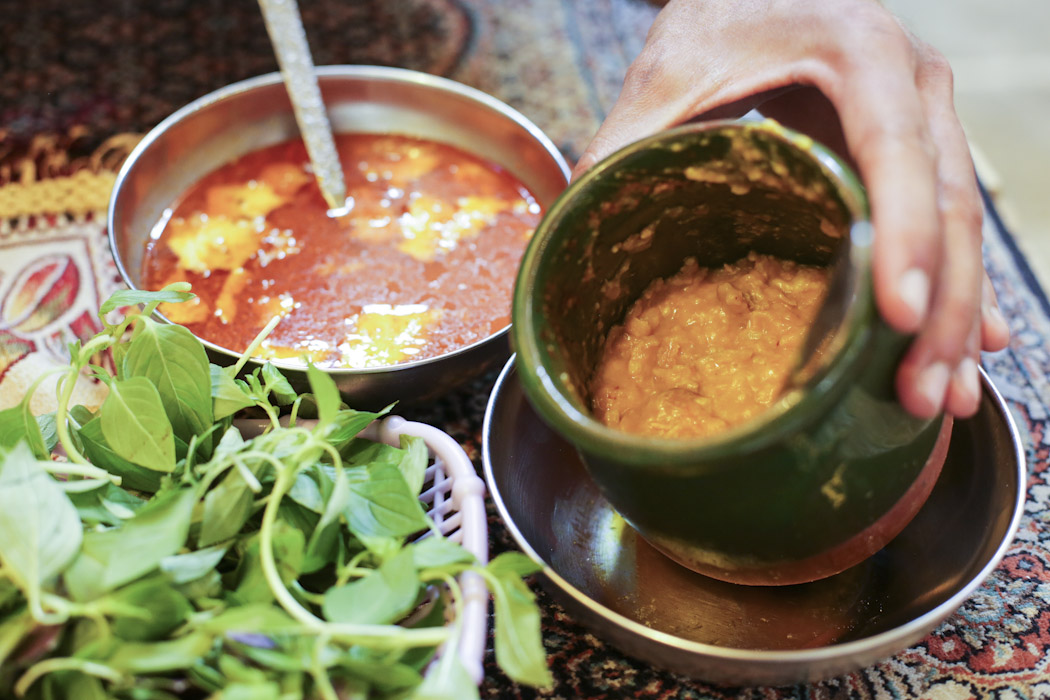
Dizi is a meat broth made of lamb and chickpeas. The pot where it cooks is brought to the table, after it has been cooking for long hours and the meat is tender. A big mortar is put in the pot after most of the broth has been removed (to be eaten separately with small pieces of bread in it) and now is the moment to mash the meat and the chickpeas until they become a paste.
9. Tomato omelette for breakfast
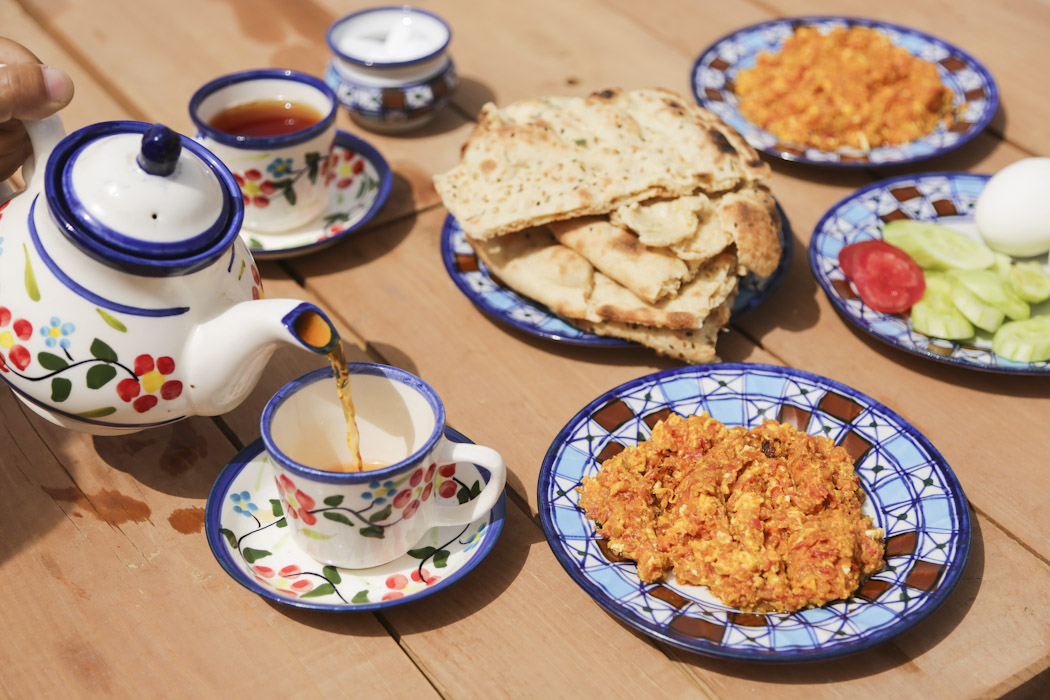
One of the breakfast possibilities in Iran is omelette. If you don’t specify how you would like it, it will come with tomato. If you are lucky it will be made with fresh tomatoes, if not with tomato pulp, as delicious!
10. Saffron Ice-cream
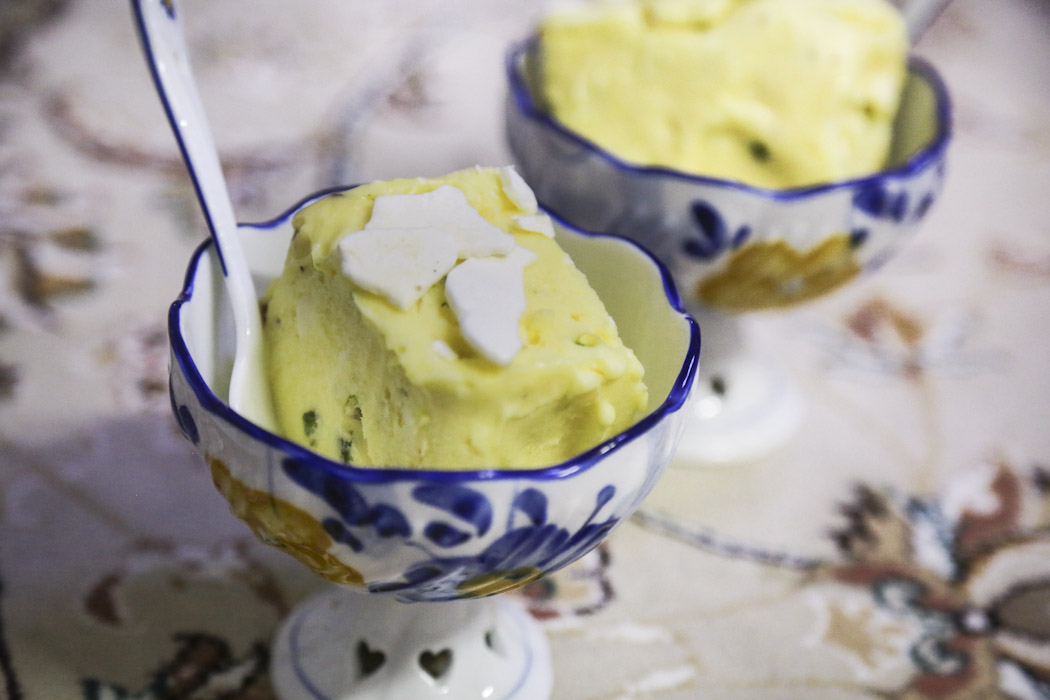
To finish this hearty meal, even when you think you can’t pack anything else in, a delicious saffron ice cream is a must! It is time to say ‘Nooshe Jaan’ a Farsi expression that works both as a ‘enjoy your meal’ or ‘hope you will digest it well’!
NOTE: The Concept of Hot and Cold in Iranian Cuisine
To master Persian cuisine, it is necessary to understand this concept. This has nothing to do with the temperature of the food, but with the ingredients’ properties and their effects on our bodies. It is based on Unani medicine, an ancient Greek medicine that has evolved within the Muslim world for the past thirteen centuries. In order to have a healthy meal, it is important to balance the consumption of ‘hot’ and ‘cold’ ingredients; whereas, when one is sick, depending on the hot or cold nature of the illness, one should counter it with the opposite temperature of food. Rice, yogurt and herbs are generally considered ‘cold’ ingredients. A healthy and balanced meal with add ‘hot’ ingredients, such as meat. This valuable knowledge about hot and cold passes from generation to generation.


